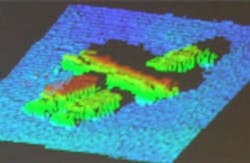DARPA looks to Aurrion for E-PHI program to blend electronic, photonic, and MEMS components on one silicon chip
Technologies that Aurrion will develop in the E-PHI program should provide considerable performance improvements and size reductions over current state-of-the-art technologies. DARPA scientists are particularly interested in low-noise electronic-photonic signal sources in the 20 GHz radio frequency band and in the 1,000-to-2,000-nanometer near-infrared optical band.
These kinds of technologies should provide markedly improved technologies for optical gyroscopes, direction finding, optical communications, and frequency reference synchronization for advanced high-bandwidth RF and mixed signal chip-integrated systems, DARPA officials say. The idea is to manufacture these technologies on existing silicon CMOS chip fabs.
Examples of potential approaches include micro-assembly, epitaxial layer bonding and printing, and direct epitaxial growth in silicon process flows. DARPA scientists anticipate that integrating photonics and electronics on a silicon substrate could help produce compact optical oscillators faster electronic feedback, enhanced coupling among photonic components, and better thermal and vibration tolerance than in technologies available today.
In the E-PHI program, Aurrion experts first will develop fabrication and device technologies to integrate different photonic and optoelectronic materials on a silicon CMOS-compatible substrate. Company researchers also will concentrate on architectures and design approaches that take advantage of heterogeneously integrated materials and electronic and photonic devices, as well as on demonstrating microsystems such as continuous-wave and pulsed laser sources; RF optoelectronic signal sources; and other novel demonstration systems.
For more information contact Aurrion online at www.aurrion.com, or DARPA at www.darpa.mil.
